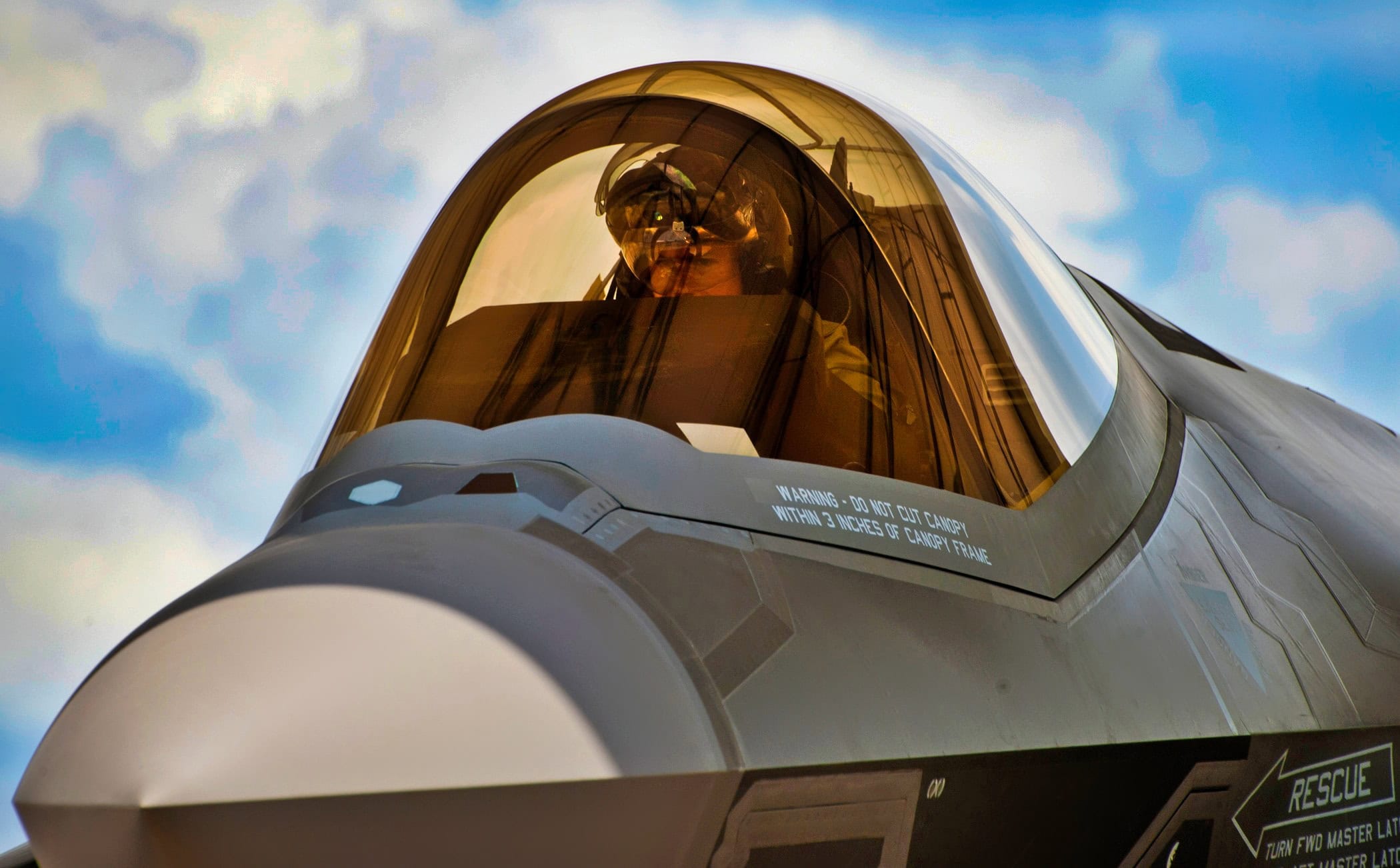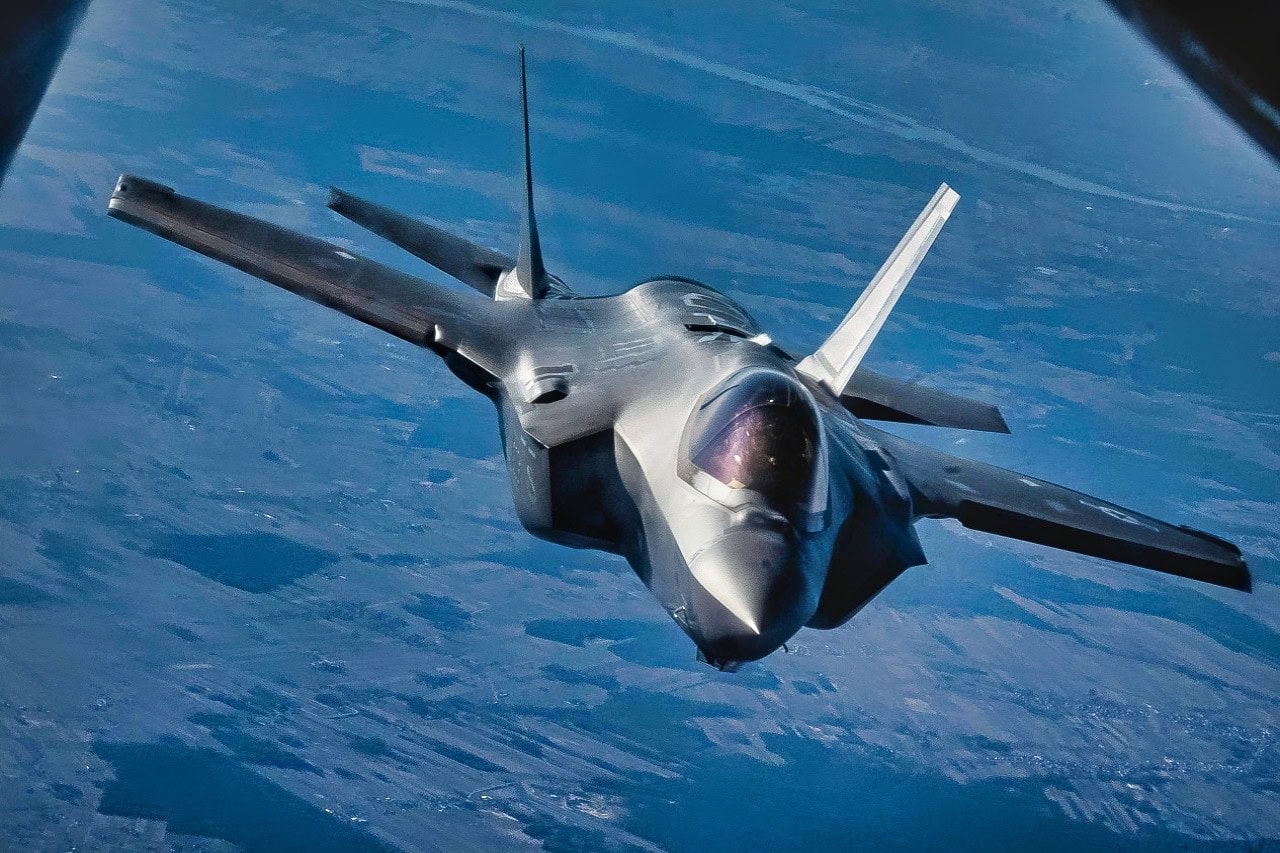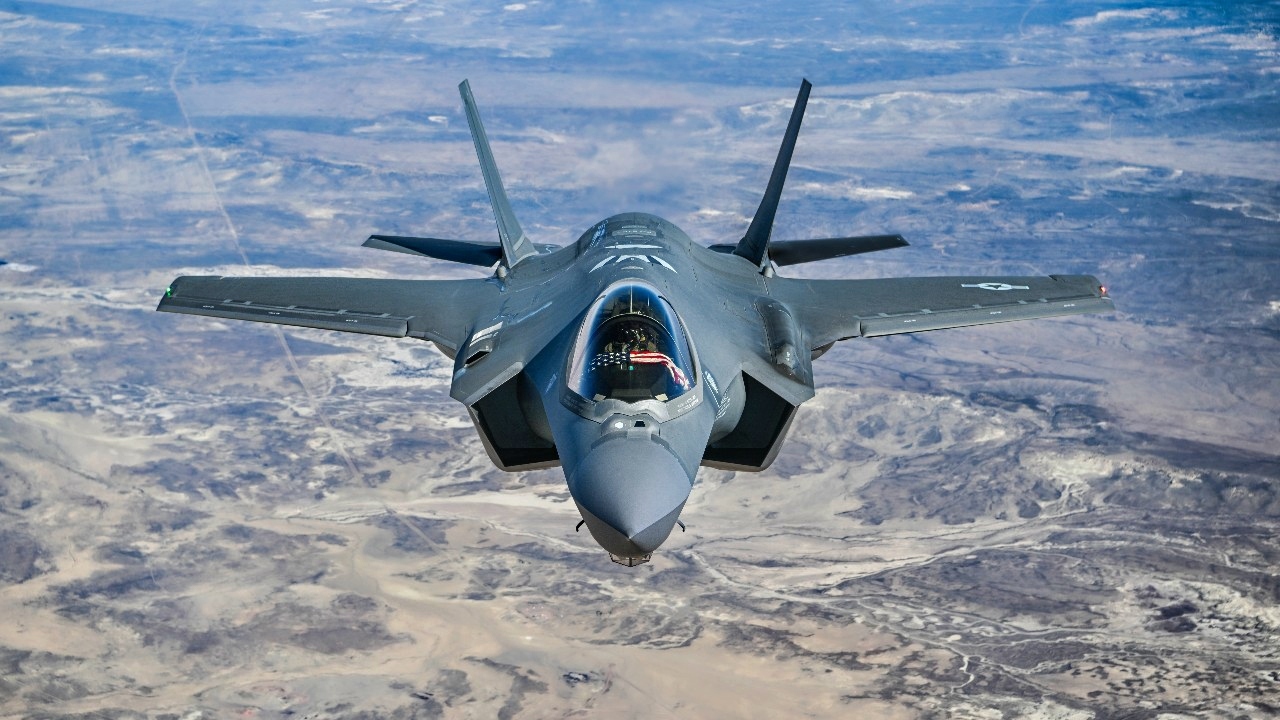Key Points – Canada’s re-evaluation of its 88-unit F-35 fighter deal, driven by political tensions with the US, faces significant practical hurdles if Ottawa considers alternatives like the Gripen E or a mixed fleet.
-The Royal Canadian Air Force has historically avoided operating multiple fighter types due to the substantial logistical, training, and maintenance complexities and costs involved. Furthermore, while alternatives have merits, capabilities like stealth and potentially range are considered inferior compared to the fifth-generation F-35.

Marine Maj. Joseph Bachmann, of the 33rd Operations Group, executes aircraft shutdown procedures of the second F-35 Lightning II joint strike fighter to arrive at Eglin Air Force Base, Fla., July 20. Bachmann is the first Marine pilot to be JSF certified. Aircraft AF-8 is the flagship for the 58th Fighter Squadron. (U.S. Air Force photo/Samuel King Jr.)
-With considerable investment already made in the F-35 program, including initial aircraft payments and infrastructure, reversing course presents major challenges.
Canada’s F-35 Debate Might Be Pointless
Operating a two-fighter fleet is a logistical headache. Considering the F-35’s capabilities, it is difficult to see an alternative to the American stealth fighter.
The Royal Canadian Air Force has historically enjoyed close relations with its American counterpart, a point perhaps best reflected in each branch’s aircraft. Canada still flies the Cold War-era CF-18, a Canadian export variant of the U.S. Navy’s F/A-18 Hornets. But since those jets were introduced into Canadian service in the early 1980s, they have grown long in the tooth.
Until recently, it was considered a sure-fire bet that Ottawa would replace their Hornets with a stealthy American platform: the F-35. That future, however, does not seem as sure as it once was. The bellicose and, on occasion, outrightly hostile rhetoric coming from the White House has soured many Canadians on the wisdom of buying into the F-35 program entirely.
Future Fighter Capability Project
In recognition of their current jet’s limitations in today’s threat environment, Canada launched the Future Fighter Capability Project, an open competition that saw several countries compete for Canada’s 88-airframe order. The Future Fighter Capability Project competition winner was Lockheed Martin’s entrant, the F-35A.
Canada says the project “represents the most significant investment in the Royal Canadian Air Force in more than 30 years,” as indeed it is. The award covers more than just the 88 fighter jets themselves. In addition to the stealth fighters, “the acquisition will include associated equipment, weapons, infrastructure, information technology, and sustainment, including training and software support” needed to, quite literally, keep Canadian F-35s off the ground and in the air.
As a first step, the initial 8-aircraft tranche of F-35s and their Royal Canadian pilots will begin their careers with that jet at the F-35A Pilot Training Center in Luke Air Force Base in Arizona. It will continue until the Canadian infrastructure meets specifications. Canadian training in the United States is expected to begin sometime next year, whereas Canada will receive the first of their jets on Canadian soil in 2028.
Work on the Canadian F-35 project has already begun, as payments for their F-35s and related infrastructure have also commenced. Earlier this year, Ottawa plunked down nearly $16 million for the “design, manufacturing, and installation of individual secure enclosures making up the Tactical – Special Access Program Facility (TAC-SAPF).” And there is more money in the pipeline that Canada would be irrecoverable should Ottawa decide to bow out of the F-35 program.

The 388th Fighter Wing’s F-35 Lightning II fifth-generation fighter cruises in Eastern European airspace, Feb. 28, 2022, in support of NATO’s collective defense. U.S. Air Forces in Europe – Air Forces Africa’s ability to support and integrate with NATO’s air policing missions continually hardens the alliance’s solidarity, collective resolve, and ability to adapt to a dynamic warfighting environment. (U.S. Air Force photo by Airman 1st Class Edgar Grimaldo)
Damage Control?
Relations between Canada and the United States are at a low ebb not seen in decades as the fallout from Trump’s trade war continues to be assessed. And with public opinion polling showing strong distaste for buying American, some have begun to plumb the depths for F-35 alternatives.
A strong impetus for doing so is the supposed “kill switch” installed on F-35s, which would theoretically allow Lockheed Martin to throttle back the jet’s capabilities, if not render them inoperable outright. And it’s not just Canada that is rethinking the scope of its F-35 order—the Danes are, too.

An Edwards AFB F-35A Lightning II fires an AIM-120 Advanced Medium-Range Air-to-Air Missile as part of Weapons Delivery Accuracy testing. The 461st Flight Test Squadron and F-35 Integrated Test Force completed WDA testing in early December, which concludes a large and important part of F-35 developmental test and evaluation. (Courtesy photo by Chad Bellay/Lockheed Martin)
Rasmus Jarlov, a Danish lawmaker, vented his regret and frustration online, posting on social media. “As one of the decision makers behind Denmark’s purchase of F35s, I regret it,” Jarlov said. Though he demurred on whether an F-35 kill switch exists or not, he said it made no difference since the Pentagon could “certainly disable the planes by simply stopping the supply of spare parts.”
“Therefore, buying American weapons is a security risk that we can not run. We will make enormous investments in air defense, fighter jets, artillery, and other weapons in the coming years, and we must avoid American weapons if at all possible.”
Prior Commitments
For decades, the Royal Canadian Air Force has opposed the idea of flying multiple kinds of fighters, maintaining that such a move would place a heavy and wholly unnecessary burden on the logistical and training pipelines and only increase complexity. Saab’s Gripen E, the runner-up to the F-35 in the Future Fighter Capability Project, has been eyed again as a potential alternative to the American stealth fighter.
However, while the Swedish jet has its merits, among which are short take-off and landing distances, operational simplicity, and a relatively low operating cost, the jet’s capabilities pale compared to the F-35. Not only is the Gripen E lacking in the stealth domain, but it is also hampered by a range insufficient to provide coverage across much of Canadian North America.
F-35 and Canada Might Be a Lock
Canada will host the G7 summit of advanced economies later this summer in Alberta. Newly-elected Canadian Prime Minister Mark Carney will likely be after cooling trade tensions between the two neighbors, and the Canadian commitment to the F-35 could come up. However, in addition to a purported critical minerals deal, Prime Minister Carney could also use the opportunity to affirm the F-35 as Canada’s future fighter of choice.
About the Author: Caleb Larson
Caleb Larson is an American multiformat journalist based in Berlin, Germany. His work covers the intersection of conflict and society, focusing on American foreign policy and European security. He has reported from Germany, Russia, and the United States. Most recently, he covered the war in Ukraine, reporting extensively on the war’s shifting battle lines from Donbas and writing on the war’s civilian and humanitarian toll. Previously, he worked as a Defense Reporter for POLITICO Europe. You can follow his latest work on X.

